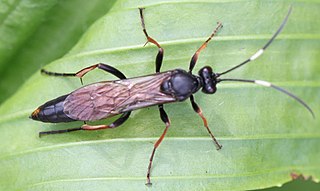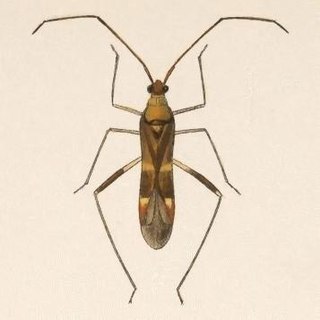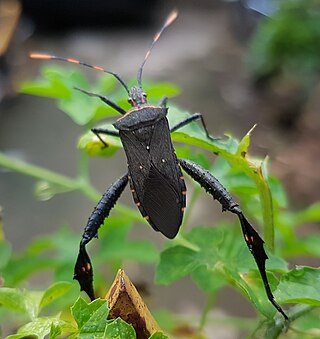Orchesella annulicornis is a species of slender springtail in the family Entomobryidae.

Sphelodon is a genus of ichneumon wasps in the family Ichneumonidae. There are about nine described species in Sphelodon.

Stenichneumon is a genus of ichneumon wasps in the family Ichneumonidae. There are at least 20 described species in Stenichneumon.

Paraxenetus is a genus of plant bugs in the family Miridae. There are about 17 described species in Paraxenetus.

Namacus annulicornis is a species of leaf-footed bug in the family Coreidae. It is found in Central America and North America.

Namacus is a genus of leaf-footed bugs in the family Coreidae. There are at least four described species in Namacus.

Sylvicola is a genus of wood gnats in the family Anisopodidae. There are more than 80 described species in Sylvicola.

Sminthurides is a genus of globular springtails in the family Sminthurididae. There are more than 30 described species in Sminthurides.

Pseudomops is a genus of cockroach in the family Ectobiidae. There are more than 40 described species in Pseudomops.

Anisocentropus is a genus of caddisflies in the family Calamoceratidae. There are more than 60 described species in Anisocentropus.

Myodocha is a genus of long-necked seed bugs in the family Rhyparochromidae. There are about 10 described species in Myodocha.
Myodocha annulicornis, the banded long-necked seed bug, is a species of dirt-colored seed bug in the family Rhyparochromidae. It is found in North America.

Cylisticus is a genus of woodlice in the family Cylisticidae. There are at least 70 described species in Cylisticus.

Stenocoris is a genus of rice bugs in the family Alydidae. There are more than 20 described species in Stenocoris, found in Africa and the Americas,
Rocconota is a genus of assassin bugs in the family Reduviidae. There are about 10 described species in Rocconota.
Phoenicocoris rostratus is a species of plant bug in the family Miridae. It is found in North America.
Aradus implanus is a species of flat bug in the family Aradidae. It is found in North America.

Geocoris punctipes, the big-eye bug, is a species of big-eyed bug in the family Geocoridae. It is found in the Caribbean, Central America, North America, Oceania, and South America.

Leptoglossus gonagra, known as the passionvine bug, citron bug or squash bug in different parts of its range, is a species of leaf-footed bug in the family Coreidae. It is found in Africa, the Caribbean, Central America, North America, South America, Southern Asia, the Pacific Ocean and Oceania.
Irbisia solani is a species of plant bug in the family Miridae. It is found in North America.













